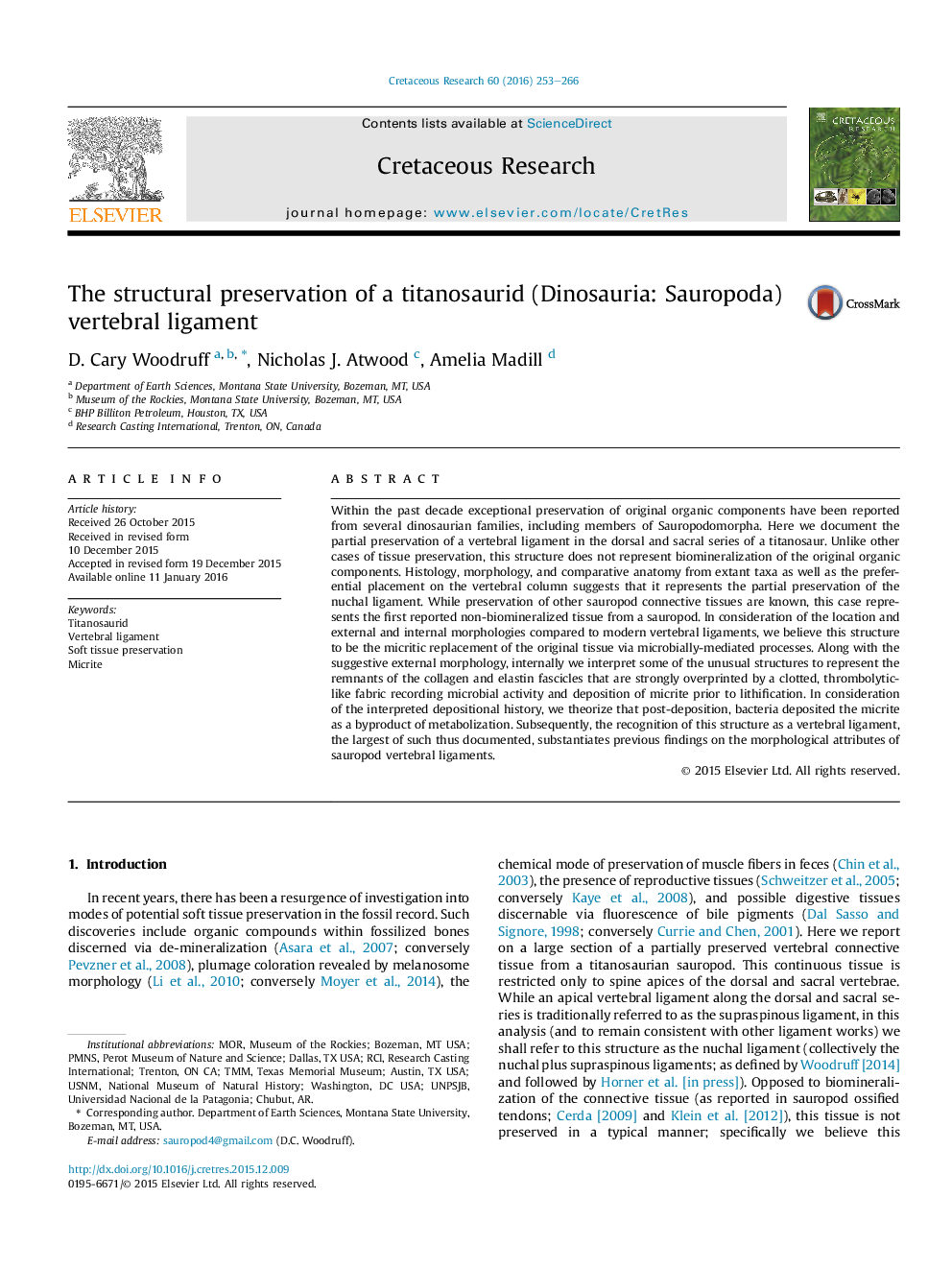| Article ID | Journal | Published Year | Pages | File Type |
|---|---|---|---|---|
| 4746777 | Cretaceous Research | 2016 | 14 Pages |
Within the past decade exceptional preservation of original organic components have been reported from several dinosaurian families, including members of Sauropodomorpha. Here we document the partial preservation of a vertebral ligament in the dorsal and sacral series of a titanosaur. Unlike other cases of tissue preservation, this structure does not represent biomineralization of the original organic components. Histology, morphology, and comparative anatomy from extant taxa as well as the preferential placement on the vertebral column suggests that it represents the partial preservation of the nuchal ligament. While preservation of other sauropod connective tissues are known, this case represents the first reported non-biomineralized tissue from a sauropod. In consideration of the location and external and internal morphologies compared to modern vertebral ligaments, we believe this structure to be the micritic replacement of the original tissue via microbially-mediated processes. Along with the suggestive external morphology, internally we interpret some of the unusual structures to represent the remnants of the collagen and elastin fascicles that are strongly overprinted by a clotted, thrombolytic-like fabric recording microbial activity and deposition of micrite prior to lithification. In consideration of the interpreted depositional history, we theorize that post-deposition, bacteria deposited the micrite as a byproduct of metabolization. Subsequently, the recognition of this structure as a vertebral ligament, the largest of such thus documented, substantiates previous findings on the morphological attributes of sauropod vertebral ligaments.
